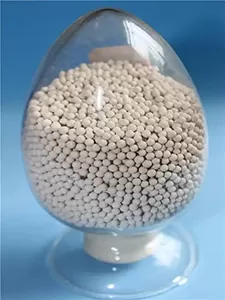molecular sieve ion exchange is a key process for tailoring the adsorbent’s properties, leveraging the replaceable cations in its aluminosilicate framework. These cations (e.g., Na⁺, K⁺, Ca²⁺) are loosely bound to the negatively charged framework, allowing them to be swapped with ions from an external solution.

The process begins by immersing the molecular sieve in a solution containing target ions. For example, replacing Na⁺ with K⁺ in 4A molecular sieve reduces pore size to form 3A sieve, while Ca²⁺ exchange creates larger pores in 5A sieve. The exchange occurs due to electrostatic attraction—ions with higher charge density or greater affinity for the framework displace the original cations.
Temperature and solution concentration influence exchange efficiency: higher temperatures accelerate ion mobility, while concentrated solutions drive the reaction toward completion. After exchange, the molecular sieve is washed to remove excess ions and dried. This modified sieve, often formed into packing for industrial columns, exhibits adjusted adsorption selectivity, ideal for separating specific molecules like hydrocarbons or gases.
Ion exchange enables customization of molecular sieve properties, making it versatile across industries—from natural gas purification to detergent synthesis—by fine-tuning pore size and surface chemistry for targeted adsorption.

